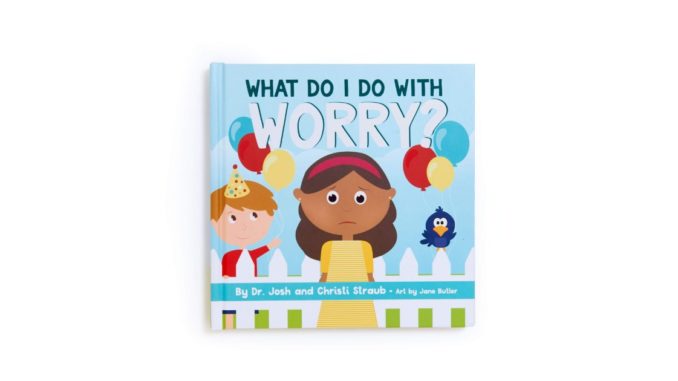
Published by B&H Kids on April 20, 2021
Genres: Children's, Children's Educational
Buy on Amazon
Goodreads

Do your what-ifs have you worried?
New to the neighborhood, little Willow has some big “what-if” worries. What if the kids don’t like me? What if my new bedroom is scary? Thankfully, Grandma is ready with a plate of cookies and some wise words about how Willow can name her “worry birds” and give them to God. Authors Dr. Josh and Christi Straub know that today’s children have a lot of real “what-ifs”—about diseases and disasters, friendships and failures, and all-things-growing-up. Willow’s story offers practical lessons to help worry birds fly away.
Also available: What Am I Feeling?
One of the things that I’m working on with my three-year-old is the concept of emotions. Learning how your body and mind feel and then how to express that is a task that we as adults take for granted (regardless of how good we actually are at it) and expect children to be able to do so as well. But that’s just not the case. Children need to be given language to understand and express how they feel and tools and processes to use to navigate those feelings. In What Do I Do With Worry? Josh and Christi Straub address some of those what-if worries.
Willow is new to the neighborhood and she has some questions: What if nobody likes me? What if my new house is scary? What if the stores are different? Willow is able to talk to her grandma about her feelings and Grandma talks her through them. Grandma says that worries are like birds: hold them tightly and they struggle and fight. Instead, we should name our worries, talk about them with someone we love, then give it over to God. She even suggests drawing a picture about what giving the worry to God would look like. The next day, Willow goes to a new friend’s house for a birthday party and has a wonderful time!
I’m not entirely sure what age group the Straubs had in mind. On one hand, the copy I received is a board book, usually intended for younger children—toddlers up through kindergarten. The story seems geared toward a slightly older audience—maybe kindergarten through early elementary.
The pages are full of text. I’d estimate the word count at about 700 words. That’s about ten minutes to read through out loud at a reasonable conversational pace, so it’s a bit lengthy for a board book to read to young children. It’s better used at a resource for those around early to middle elementary.
The analogy Grandma gives about worry being a bird is usable, if not perfect. It gives children a tangible, physical feel for what they might be feeling internally. It provides them a solution for processing worry. And it presents the resolution of the worry in the book.
Overall, What Do I Do With Worry is rather disappointing. I think more work needed to be done to determine a specific age demographic. I also think more could have been done to make the story a little less a counseling vignette and more an engaging story. The point that it makes is good. It doesn’t really do so in an attention-catching way. I’ve enjoyed Josh Straub’s writing to adults in the past. This movement to a book for children just didn’t take for me.
